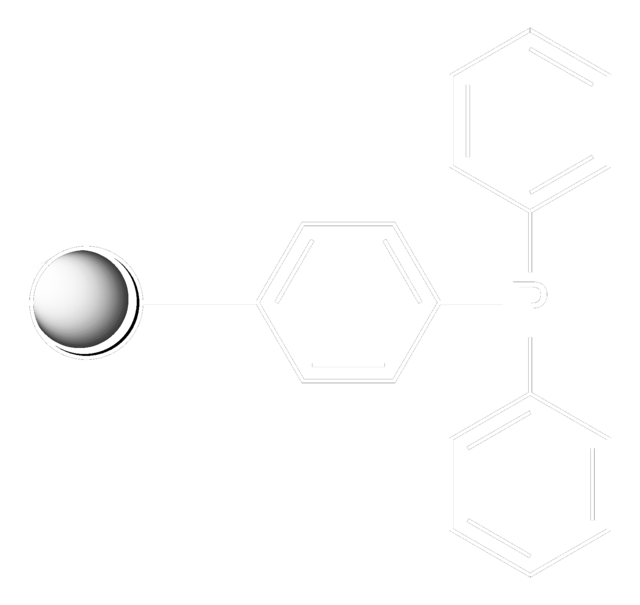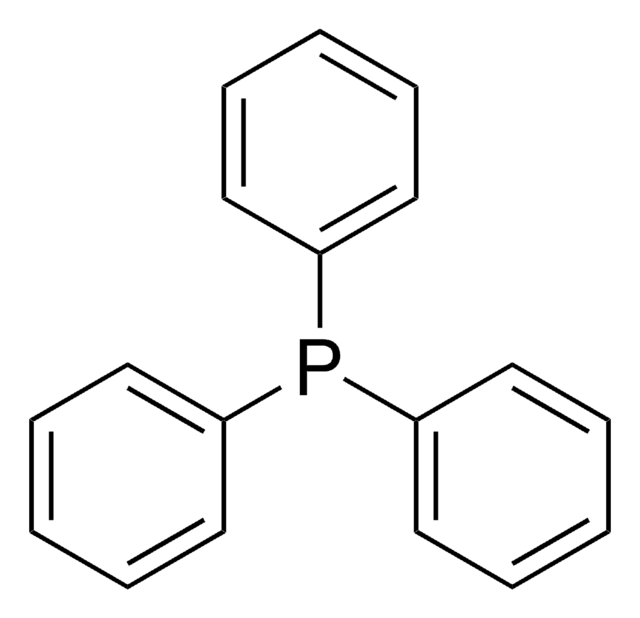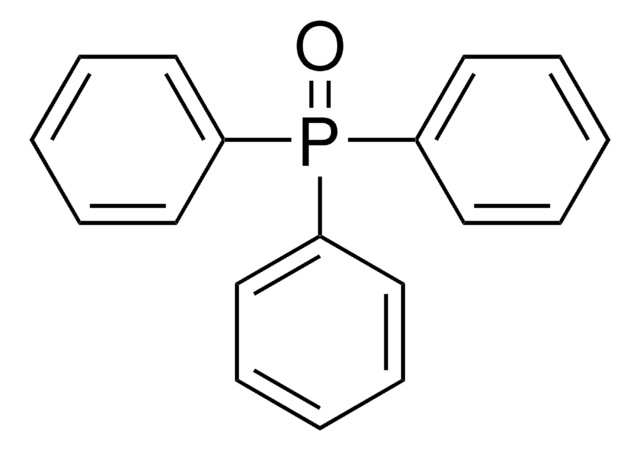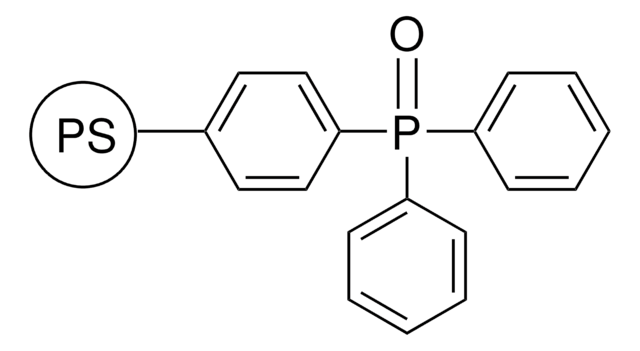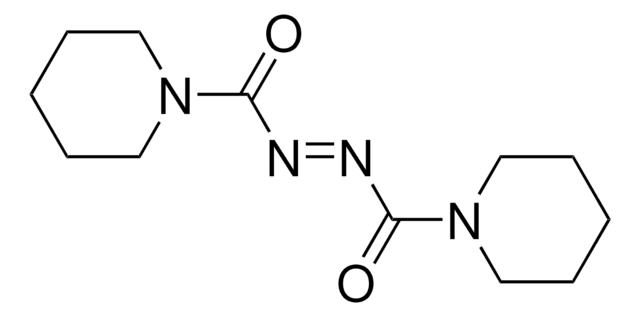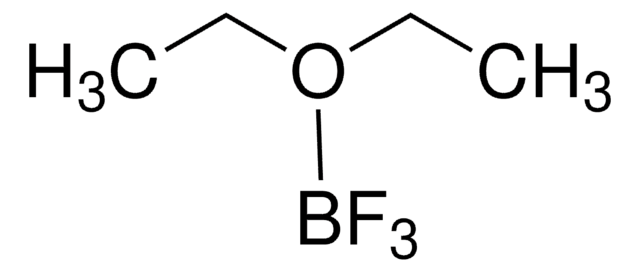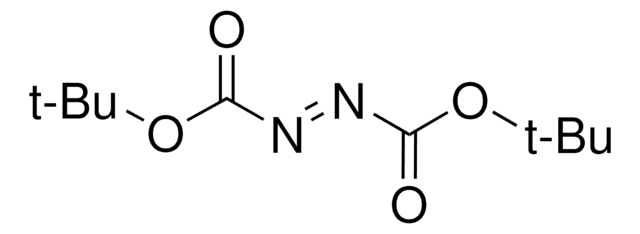93093
Triphenylphosphine, polymer-bound
100-200 mesh, extent of labeling: ~3 mmol/g triphenylphosphine loading
Synonym(s):
Copolymer of styrene and divinylbenzene, diphenylphosphinated, Diphenylphosphino-polystyrene, Polystyrene crosslinked with divinylbenzene, diphenylphosphinated
About This Item
Recommended Products
form
solid
Quality Level
reaction suitability
reaction type: Buchwald-Hartwig Cross Coupling Reaction
reaction type: Heck Reaction
reaction type: Hiyama Coupling
reaction type: Negishi Coupling
reaction type: Sonogashira Coupling
reaction type: Stille Coupling
reaction type: Suzuki-Miyaura Coupling
reaction type: solution phase peptide synthesis
reagent type: ligand
extent of labeling
~3 mmol/g triphenylphosphine loading
matrix
crosslinked with 2% DVB
particle size
100-200 mesh
functional group
phosphine oxide
SMILES string
c1ccc(cc1)P(c2ccccc2)c3ccccc3
InChI
1S/C18H15P/c1-4-10-16(11-5-1)19(17-12-6-2-7-13-17)18-14-8-3-9-15-18/h1-15H
InChI key
RIOQSEWOXXDEQQ-UHFFFAOYSA-N
Looking for similar products? Visit Product Comparison Guide
Application
It can also be used:
- For the esterification of alkylphosphonic acids using primary alcohols in the presence of iodine and imidazole.
- To catalyze the conversion of 3-[3-(1,3-dioxolan-2-yl)-1-hydroxypropyl]pyridine to 3-[1-bromo-3-(1,3-dioxolan-2-yl)propyl]pyridine using carbon tetrabromide.
- To isomerize (Z)-nitro olefins to the (E)-isomers.
- To prepare polymer-bound ylides which are useful in Wittig reactions.
- To convert alcohols or carboxylic acids to the corresponding chlorides.
- In combination with carbon tetrachloride for the coupling N-alkoxycarbonyl α-amino acids and primary amines to form the corresponding amides.
Other Notes
Storage Class Code
11 - Combustible Solids
WGK
WGK 3
Personal Protective Equipment
Choose from one of the most recent versions:
Already Own This Product?
Find documentation for the products that you have recently purchased in the Document Library.
Our team of scientists has experience in all areas of research including Life Science, Material Science, Chemical Synthesis, Chromatography, Analytical and many others.
Contact Technical Service